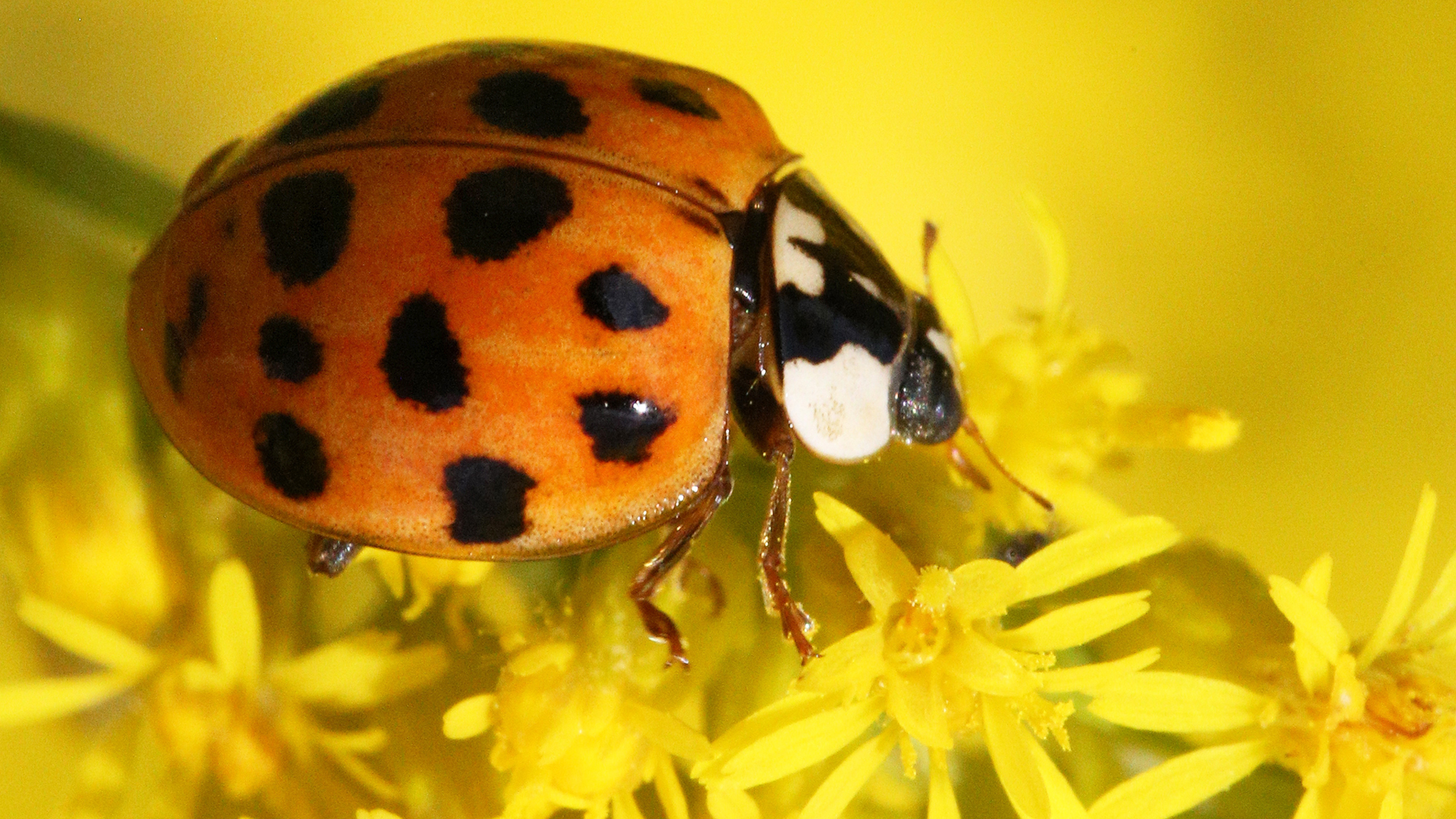

Bats and spiders get most of the attention for Halloween and spooky season, but October is also ladybug time in many parts of the United States. Alongside their appropriately nicknamed cousins the “Halloween beetle,” residents from Wisconsin to North Carolina to New Hampshire historically report seeing more of these insects indoors this time of year. Here’s why.
[Related: These fold-up robots fly just like ladybugs.]
Looking for warmth
Ladybugs typically spend the warmer summer months outside in gardens and grasses. As fall settles in, the insects likely begin to seek a place to hibernate indoors when the temperatures begin to drop.
They could also be looking for a safe and warm place to lay their eggs. According to This Old House, ladybugs will often leave a trail of pheromones that tells other ladybugs in the colony, “Hey, this place is safe, warm, and perfect for egg-laying,” when they find a good spot to lay eggs.
They are most commonly spotted by doors and windows, where it is easy for them to squeeze inside under cracks. They can also hitch a ride on potted plants and flowers brought into the home.
How to tell a ladybug from a Halloween beetle
The more well-known and common seven spotted ladybugs (Hippodamia convergens) are often confused with their cousins the Asian lady beetle aka harlequin ladybird or the Halloween beetle (Harmonia axyridis). These bugs are also red, but can also appear more orange and have more spots on their backs. It is also more typical for them to swarm houses in the fall and before the winter. Both species are members of the Coccinellidae family of beetles, but belong to a different genus.
The easiest way to tell the two cousins apart is to look at their spots. If there are more spots, it’s a Halloween beetle. If there are only seven, it’s a ladybug. You can also look around their “neck.” Halloween beetles have different markings that look a bit like a butterfly or a black “M.” They are also generally larger than ladybugs.
Ladybugs also typically have a rounded or oval shape. Halloween beetles also have an oval appearance, but they are slightly longer with a pointed head and snout.
According to University of Kentucky entomologists, Asian lady beetles seem to be attracted to lit up surfaces that have a light-dark surface contrast. Homes that are partially illuminated by the sun are then attractive to the beatles.
[Related: How many ants are there on Earth? Thousands of billions.]
“Once the beetles alight on buildings, they seek out crevices and protected places to spend the winter. They often congregate in attics, wall cavities, and other protected locations,” the entomologists told WBIR-TV in Knoxville, Tennessee. “Since lady beetles are attracted to light, they are often seen around windows and light fixtures.”
Can they hurt me or my house?
Ladybugs do more good than harm. They do not carry any diseases and they are a garden’s best friend, by eating aphids and worms that can ruin spring flowers and veggies. Halloween beetles are generally more likely to infest a home.
They are not typically aggressive to humans, but Halloween beetles can bite if they feel trapped or threatened. Like other insects, their bites can create small, red, and itchy marks.
Halloween beetles can also harm furniture or carpets with their secretions. Some safe ways to keep them away include planting mums, lavender, bay leaves, cloves, citronella, and plants in the citrus and mint families to naturally repel ladybugs, sealing entry points to your home, and using door sweeps at the bottom of doors.
